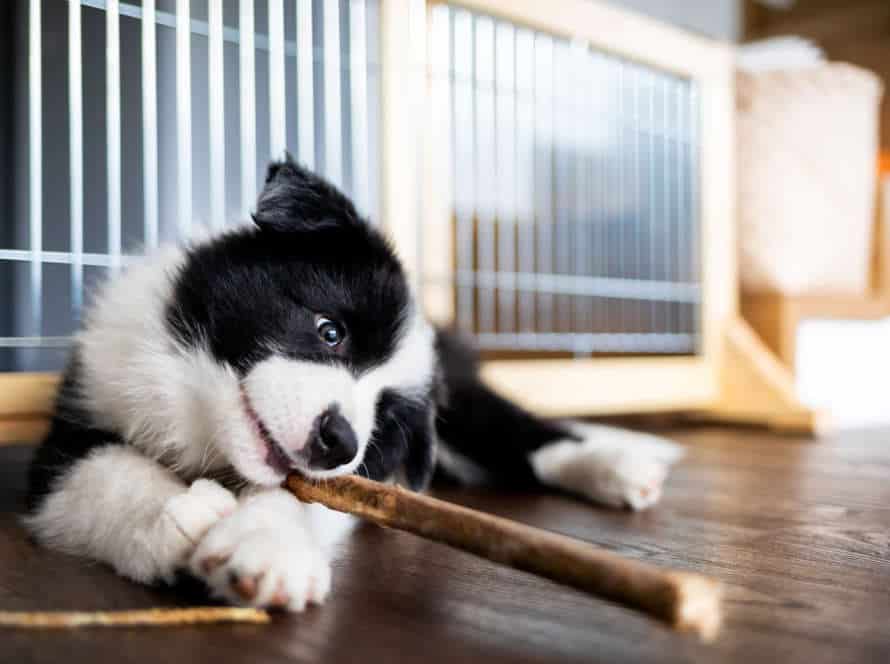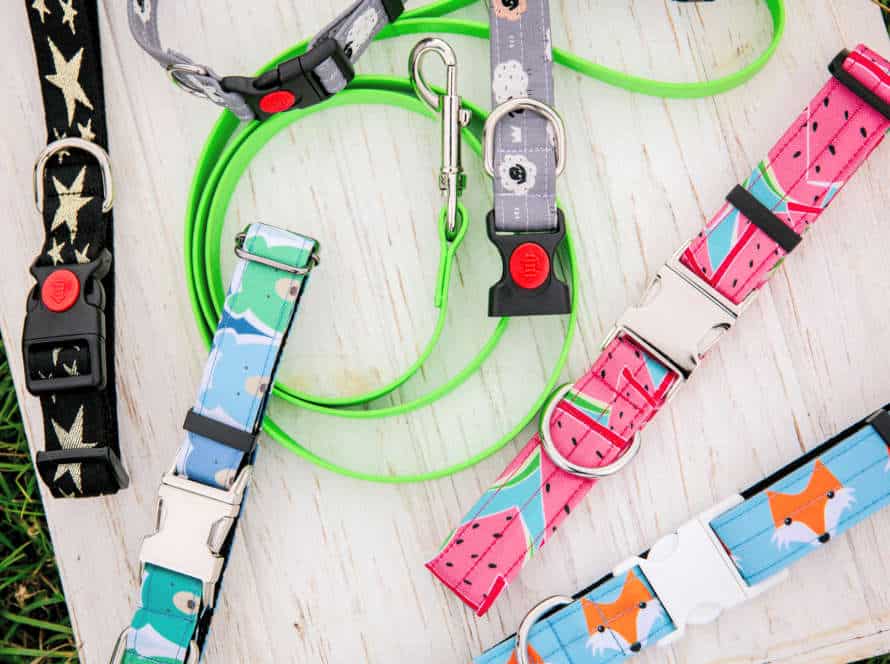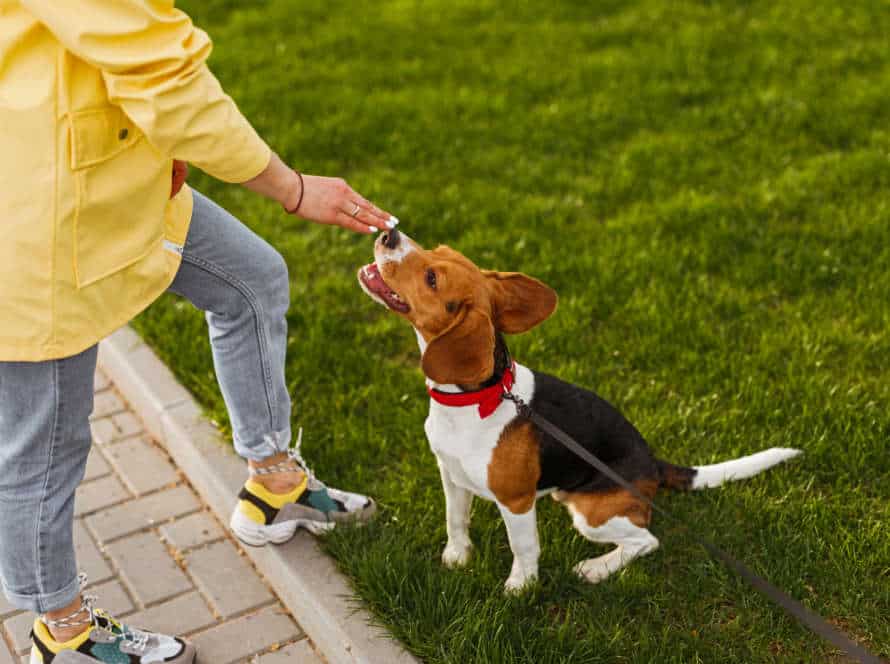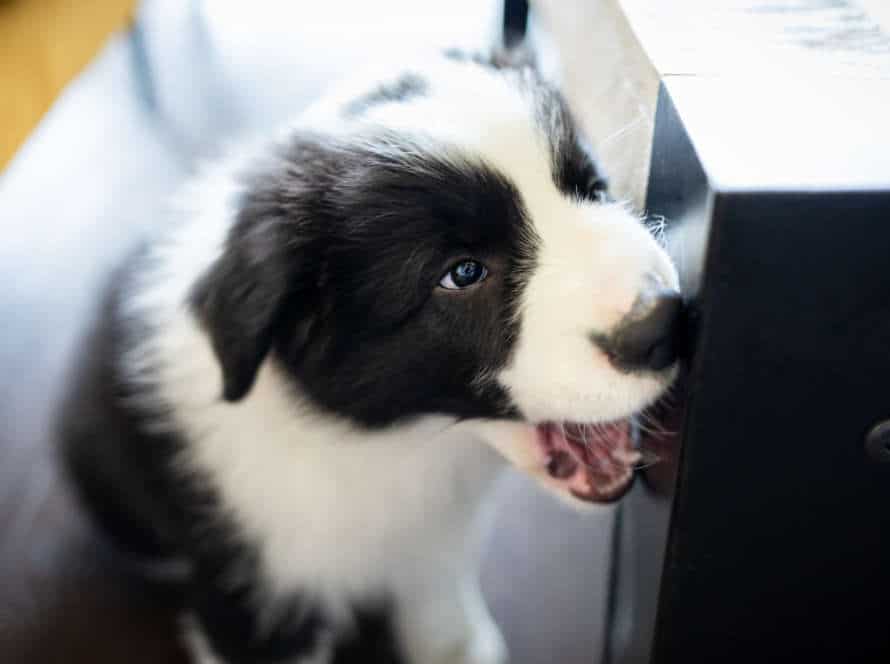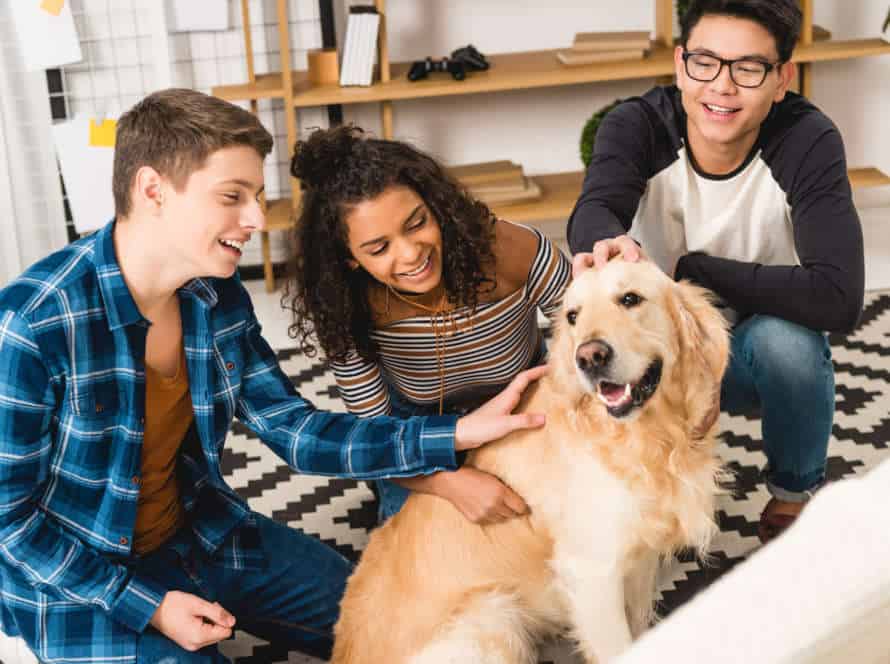Top 5 Features to Look for in a Dog Crate
In search of the perfect dog crate? Consider 5 key features for comfort, safety, and ease of use for your pup and you.
- Size & Space: Measure your pup’s size and select a crate that’s at least 6″ taller and longer.
- Durability: A sturdy, well-constructed crate made from steel or aluminum prevents breakage and damage.
- Ventilation: Make sure the crate is airy and well-ventilated to avoid stuffiness and bad odors.
- Security: A secure door and latching mechanism prevents escape and keeps your pup safe.
- Cleaning: Choose a crate with a removable tray or grate to make cleaning easy.
Pro Tip: Always supervise your pet to prevent accidents or dangers!
Durability
Durability is key when shopping for a pup’s crate. Find a sturdy metal or plastic one that can handle regular use and any wear and tear. Make sure all parts are securely fastened. Beware of sharp points or edges to avoid injuries. Ensure the crate stands up to your pup’s energy.
Material
Durability should be the #1 factor when picking a dog crate. Here are the top 5 characteristics to look for in materials for long-lasting use:
- Gauge of wire: Lower gauge = stronger.
- Powder coating: Offers protection from rust & corrosion.
- Welds: Pick welded connections over bent/twisted.
- Metal composition: Steel or metal alloys are best.
- Reinforcements: Corner bracing/support bars add strength & stability.
Remember these key points to pick a safe & durable crate for your pup!
Construction and design
When selecting a dog crate, durability is very important. Here are the top 5 features you should look for in a robust design.
- Material: Opt for one made with strong, rust-resistant materials such as stainless steel, aluminum or heavy-duty plastic.
- Ventilation: Check that it has enough air flow with mesh windows or ventilation holes.
- Security: Look for a secure locking system like a latch or bolt.
- Easy to clean: Pick one with removable pans or trays so messes can be easily cleared.
- Comfort: Ensure there is space for your pet to move and stretch out. You can add bedding or blankets for extra comfort.
Chew-Proof
Durability is a must when it comes to dog crates. Especially if your pup likes to gnaw on their crate. Here are 5 features to keep an eye out for!
- Heavy-duty materials, like stainless steel, aluminum, or reinforced plastic, for daily use.
- Chew-proof construction, like metal bars or reinforced plastic.
- Secure latches – so your pup cannot open or tamper with it.
- Smooth edges – no snagging or catching on paws or coat.
- Easy to clean – removable tray or grate that can be quickly wiped down or hosed off.
Size and Design
The size and design of your pup’s crate are vital. Check the size is suitable for your dog. Too large, then your pup won’t feel safe. Too small, and your pup will be uncomfortable. Think about ventilation, visibility, and other features too. So that your pup feels safe and cozy in their new home.
Appropriate size for your breed
Picking the right size dog crate is critical for your pet’s comfort and security. Different breeds need different crate sizes to let them rest, extend and move. Here are the top 5 features to look for in a dog crate:
- Length – The crate should be 6 inches more than your pooch’s body length from the nose to the tail base.
- Height – The crate should be high enough for your dog to stand up without hitting its head.
- Width – The crate should be wide enough for your pet to turn around comfortably.
- Material – Select a crate made from strong material to resist your pet’s scratching and chewing behaviors.
- Design – Search for a crate with a removable tray for cleaning and vented sides for air flow.
Remember, the crate should be a cozy and secure space for your pet, not a detainment area. So, pick the crate size that is suitable for your breed to encourage relaxation and comfort.
Comfort
Comfort should be number one when it comes to picking out a dog crate. Here are five features to keep in mind to make sure your pup’s crate is the right size, design, and as comfy as can be.
- Size: Measure your doggie and get a crate that fits their weight and size. They should be able to stand, spin, and lay down in it easily.
- Design: Choose a crate type that your pup needs – open-wire, plastic, or wooden.
- Ventilation: Make sure air circulates and your pup doesn’t overheat – look for models with plenty of holes or mesh panels.
- Padding and Bedding: Soft materials and bedding add extra comfort. Look for models with padding, or add a soft blanket or bed.
- Ease of Cleaning: Get a crate with removable trays or easy-to-clean materials so you can keep it clean and dry.
Pro tip: Introduce your pup to their new crate slowly, using lots of positive reinforcement, to help them feel safe.
Door configuration and accessibility
When selecting a dog crate, a key factor is the type of door. The ideal door can make it simpler to clean, access your pet, and increase the crate’s usefulness. Here are the 5 features to look for:
- Front Door: Usual and offers easy access.
- Side Door: Perfect when you have limited room.
- Top Door: Good for safe removal from crate. Especially if pet is scared or aggressive.
- Double Door: Great for when you need a certain position in your home.
- Sliding/Rolling Door: Offers excellent accessibility and makes cleaning easy.
Pro Tip: Choose a crate that fits your needs and pet’s behavior. Don’t forget size and durability as well.
Ventilation and Airflow
Picking a pup crate? Ventilation and airflow should be #1 on your list! Make sure your dog has plenty of air conversion. This’ll keep them healthy, comfy and reduce odors. Temperature control? That’s an added bonus.
Here’s an overview of features you should look for in a dog crate. The key? Ventilation and airflow!
Adequate airflow
Ensuring your pup is content & safe is key when selecting a dog crate – here are the top five features to consider!
- Size: Big enough for them to stand, turn & lie down comfortably, but small enough to feel cozy & secure.
- Material: Sturdy, easy to clean & non-toxic.
- Security: A secure locking mechanism to prevent escape or injury.
- Portability: Lightweight & easy to move – great for travel & outdoor activities.
- Adequate airflow: Ventilation & airflow to stop them from overheating. Look for models with mesh windows or wire grills.
These features will give your doggo the perfect space to call their own.
Proper ventilation
When picking a doggy crate, ventilation is a must! To keep your pup healthy and comfy, and the crate fresh and odour-free, good airflow is essential. Here are the top 5 features to look for when selecting a dog crate for proper ventilation and airflow:
- Enough Space: Ensure the crate isn’t too tiny for your pup. Limited space can lead to poor ventilation.
- Mesh Design: Wire cages and crates with mesh doors or walls allow air to flow and your pup to see outside.
- Ventilation Holes: The crate should have ventilation holes on the sides and back for air to enter.
- Placement: Put the crate in a well-ventilated area in your home that isn’t too hot or cold.
- Cleaning: Regular cleaning and frequent maintenance of the dog crate is critical for proper ventilation and your pup’s comfort. A crate with a detachable tray or easy-to-clean surface is a bonus.
Pro tip – Clean and maintain the dog crate often to avoid odours and ensure good ventilation.
Temperature regulation
Regulating temperature is essential for your pup’s safety and comfort in a crate. Good airflow and ventilation are key. Here are 5 features to look for when choosing a crate:
- Size: Make sure your dog has enough room to stand, turn and lie down easily. Crowding can reduce air circulation.
- Open sides: Opt for wire or open sides to promote airflow.
- Vents: Look for crates with vents to help with air circulation.
- Placement: Check where the crate will be placed. Avoid direct sunlight and harsh winds.
- Climate control: If temperatures are extreme, use fans, blankets, or other accessories to keep your dog comfortable.
Security
Security is essential when choosing a dog crate. Ensure your pet is safe and secure in their new home. It must have a strong, hardy design to prevent escape. Additionally, consider the locks and materials it’s made of.
Let’s examine other features to keep in mind when buying a dog crate:
Locking mechanism
When searching for a dog crate, the locking system is an important factor to consider. The correct one will keep your pup safe and secure, without them being able to escape. Here are the top 5 features for the locking system:
- Double Lock: Secures the door at two points, making it extra secure.
- Slam latch: Quick & easy locking, no extra hardware needed.
- Spring-loaded bolt: Keeps the door securely shut until you release it.
- Welded crossbar: Pressure is evenly distributed across the door.
- Padlock compatibility: An extra layer of security by adding a padlock.
Latch type
When searching for a dog crate, look into latch types. It can affect the security and strength of the crate.
Here’s 3 popular latches and their pros/cons:
- Sliding Bolt Latches: Easy to use, strong lock. But, metal bolt can make noise on metal frames.
- Spring-Loaded Latches: Secure lock, easy to operate with one hand. But, can become weaker with wear & tear.
- Rotary Latches: Most secure, quiet lock. But, can be hard to operate with one hand.
Choose a latch type that fits your pet’s size/behavior and your preference for ease of use/strength of lock.
Escape prevention
A dog crate is important for keeping your pup safe. To avoid escape, look for these five features:
- Choose materials that can stand up to scratching and chewing.
- Get a crate with secure doors and latches.
- Make sure it’s the right size. Too big can make your pup insecure.
- Look for an escape-proof crate with reinforced corners or welded steel wire.
- Go for one with a removable tray for easy cleaning. Dirty crates can cause discomfort and your pup may try to escape.
Pro Tip: Monitor your dog in the crate for safety.
Additional Features
Dog crates come in different sizes, constructions, and plastic or metal options. But, there are more features to consider. These can make a difference in price and usability. Let’s explore the most popular additional crate features.
Divider Panel
Divider panels are a great way to customize your pup’s crate! Here are the top 5 features to look for when choosing one:
- Size: Make sure it’s big enough for your dog to stand, turn, and lie down comfortably.
- Durability: Look for solid materials and secure latches.
- Portability: Handles or wheels make it easy to transport and store.
- Cleaning: Removable pans or trays make cleaning and waste disposal easier.
- Divider Panel: This is a great way to save money. It adjusts the crate size as your pup grows. Plus, it keeps them feeling secure and cozy.
Removable Tray
A removable tray is a must-have when buying a dog crate. It can be easily slid out and cleaned. Also, it helps keep the crate free from bad smells.
Here are the top 5 features to look for in a dog crate:
- Size & comfort. Check that your pet can stand up, turn around and lie down easily.
- Durability. Pick one that can handle your pup’s weight and any possible scratching/chewing.
- Portability. Get one that can be folded and transported easily.
- Security. Choose a crate with a latching mechanism to stop accidental escapes.
- Ventilation. Make sure there’s enough airflow and ventilation for hot weather.
Pro Tip: Get a crate with multiple doors for easy placement and cleaning access.
Portability and Storage
When deciding on a dog crate, portability and storage are key. Here are five extra features to look for to make sure it’s easy to carry and store:
- Lightweight yet Durable: Get a crate made from materials like stainless steel, aluminum, or heavy-duty plastic that can handle wear and tear in transit.
- Collapsible: Look for one that folds down for simple storage.
- Removable Tray: This allows for easy cleaning, making it hygienic for your pup.
- Ventilation: The crate should be well-ventilated, so your pet stays comfy during trips.
- Comfortable Interior: The interior should be roomy enough for your pup to stand up, lay down, and move around easily. Add a cushion or bed for extra comfort.
Pro Tip: Don’t forget to factor in your pup’s size and temperament before choosing a crate to ensure maximum safety and comfort.
Frequently Asked Questions
Q: What materials should I look for in a dog crate?
A: Look for a crate made with sturdy materials, such as metal or heavy-duty plastic, to ensure it can withstand your pup’s chewing and scratching.
Q: What size should the crate be for my dog?
A: The crate should be large enough for your dog to stand up, turn around, and lie down comfortably. Measure your dog’s height and length, and choose a crate that is at least 6 inches longer and taller than your measurements.
Q: Should I choose a crate with a door on the front or side?
A: It depends on your space and your dog’s behavior. Front-door crates are great for small spaces and dogs who are calm in their crate. Side-door crates offer more flexibility in placement and may be better suited for dogs who prefer a little extra space.
Q: How important is ventilation in a dog crate?
A: Proper ventilation is crucial to your dog’s comfort and safety. Look for crates with multiple vents or mesh panels, so your dog can breathe easy and stay cool.
Q: Should I choose a travel or stationary crate?
A: It depends on your lifestyle and your dog’s needs. If you plan to travel with your pup, a portable crate may be best. If your dog will primarily stay at home, a stationary crate with added features, such as a cover or elevated base, may be sufficient.



